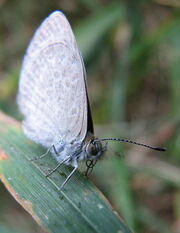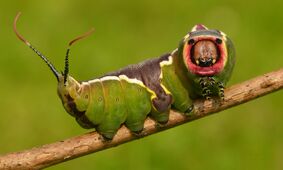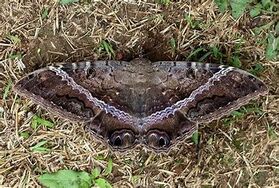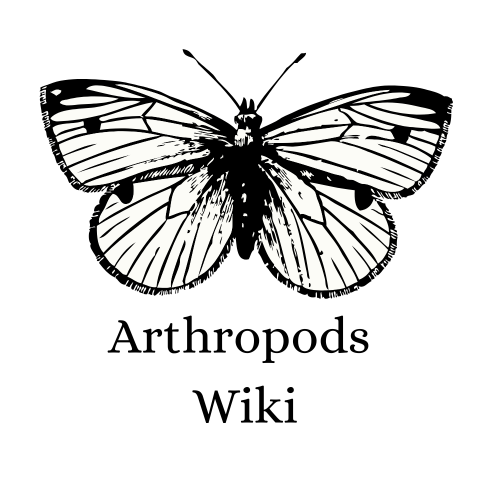
Agrotis ipsilon (Black cutoworm)
Lepidoptera is the order of butterflies and moths. There are currently 180,000 species of Lepidopterans, These insects follow a complete metamorphosis. Although in their larval stage a few species may be considered as an agricultural pest to several crops as in their larval stage they primarily depend upon autotrophs (green plants) for their survival. however upon emerging their chrysalis they are considered to help in plant reproduction by pollinating a numerous variety of flowering plants. Their caterpillars have several legs, they have a pair of three sharp appendages in the front that helps them hold onto their food and several pro-legs at the back which helps the caterpillar grip onto surfaces.
Appearance & Biology

Lepidopterans are considerably the insects with the largest insects as per their wingspan (as per their body lengths) their wings are covered with pigmented scales that either serve as a warning to predators about their nasty taste or as a natural mimicry to their surrounding areas and habitats, This Genus consists of butterflies and moths. They are often remarkably known for their habitual actions namely moths are nocturnal and active during nightfall on the other hand butterflies are considered as diurnal creatures active from the sunrise to the late afternoon sunset. They both have similarities as well namely their highly adapted mouthparts used for sucking nectar out of flowers, some species have extra long proboscis that help them feed on the nectar of flowers that are well too deep for other species. Lepidopterans primarily depend upon nectar or the energy they derived as a caterpillar. Moths may have combed feathery antennae while butterflies have straight long antennae with a bump at the end.
Life cycle

Puss moth caterpillar
Most species of lepidopterans derive their food from nectar however some species of moth lack mouthparts and depend upon all the energy restored in their Larval stage examples of such are IO moth, Luna moth & others. All lepidopterans have one similarity that they depend upon autotrophs for food in their larval stage. Upon hatching the newly born larva will firstly consume the remaining egg shells after that they continue to munch of the fresh leaves of their host plant they will eventually mold once they grow too big for their own selves, a caterpillar may molt several times in it's lifetime. Upon entering the pupa stage, the larva will molt for one final time, in the case of a butterfly it is known as a chrysalis in the case of a moth is a cocoon. It may take several days, weeks and in some cases moths for the caterpillar to surpass this stage of the lifecycle. A beautiful butterfly or a moth will emerge out of the pupa and takes several hours to pump blood into those delicate wings until it takes it's first flight.
Agricultural threat
Moth and butterfly caterpillars pose a heavy threat to agriculture due to their mass reproduction causing a great decrease in harvest also destroying the crops and making them vulnerable to plant infections that can cause a great loss however not all species cause agricultural damage as caterpillars are very certain about the plants they feed on, the lesser grass blue butterfly is said to greatly help farmers as their caterpillars feed on wild grasses and weeds. It is however not recommended using pesticides on crops as they can cause damage to the plant and affect it's growth while harming the helpful insect pollinators at the same time. It is instead recommended picking the caterpillars up using tweezers or tongs and putting them in a container once they all are managed with then release them into the wild.
Defenses

Cryptic colorations conceal the black witch moth within it's surroundings.
Lepidopterans have delicate wings and colorful markings that make them an easy prey for birds and other animals hence they need to specialize as per their surroundings knowing the threat posed my their natural enemies some butterflies have vibrant coloration which warns their predators that they aren't meant to be consumed, several butterflies and their caterpillars have such colorations making other predatory creatures aware of their venom. This can be seen in several species but the vibrant colorations and venom aren't going to protect them against most predatory insects that are immune to poison. Hence some moths & butterflies posses extremely cunning techniques of survival, they have eye-spots on their wings, patterns that closely resemble large eye-like structures, these eye-spots are used to discourage or terrify their predators giving them a chance to escape in the meantime. Many moths & butterflies have cryptic colorations that resemble their surroundings this acts as a natural highly efficient camouflage against several predators.
Folklore
Sampling of Irish Lore
- In the 1600s, in Ireland , killing a white butterfly was prohibited since it was believed to be the soul of a dead child
- The dealan-dhe' is an Irish term which is used to refer to a butterfly, but also takes several other meanings. It is also the brightness or lightning of the Gods, or it may be used to refer to a burning stick that is shaken back and forth to create the need-fire
- The need-fire is often central to Irish thought. When a fire is created and burned for three nights upon a piece of land that land belong to the person who created that fire. This is the fire of the householder, which is also the fire of man. At Beltaine the household fire is rekindled in every hearth in Ireland from a central fire. Another reference between fire and butterflies can be seen within the term tiene-dhe' , with the usage of tiene meaning fire. This term refers both to the butterfly and to the fire of the Gods
Vocabulary-Butterfly
Butterflies have played an important role in being used as a common metaphor which is unbelievably true each and every phrase symbolizes something which has a common relations with Lepidoptera and butterflies in this case of discussion there are many phrases where insects are used either as a simile or as metaphor to enhance one's vocabulary. (Sort of)
The meaning of the phrase "Butterflies in your stomach" means someone or something being constantly hesitant and feeling timid in simpler words. Used to symbolize shyness and hesitance on certain occasions.
There is someone else who is very social and that is a "Social butterfly" A person who likes to gather around people and organize gatherings. These people are extroverts and mix well with anyone and everyone around them, If one of your friend is a social butterfly, you should be happy having friend like them.
As beautiful as a butterfly will symbolize one's quality of either having a charming appearance or the beauty that resembles a butterfly another simile to make your speech more colorful "The butterfly's wings are painted beautifully in pigments"
Habitat
most lepidopterans are highly specified about the plants they feed on, they highly prefer habitats rich in foliage such as meadows with a highly-rich availability of flowers.
Similar species of note
| Nemopteridae | spoonwings | |
|---|---|---|
| Odonata | Dragonflies & Damselflies | |
| Chrysopidae | lacewings | |
| Ephemeroptera | Mayflies & stoneflies |
